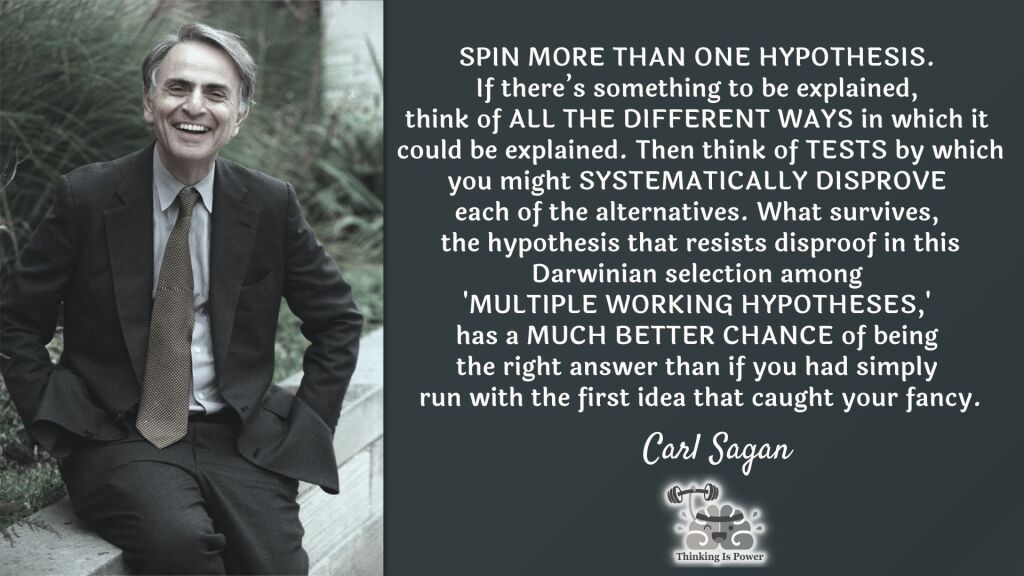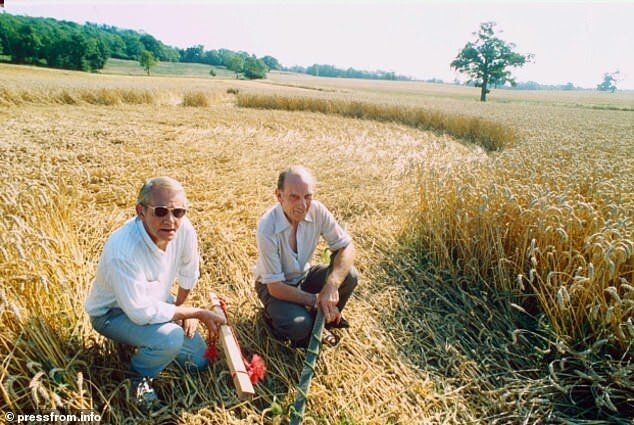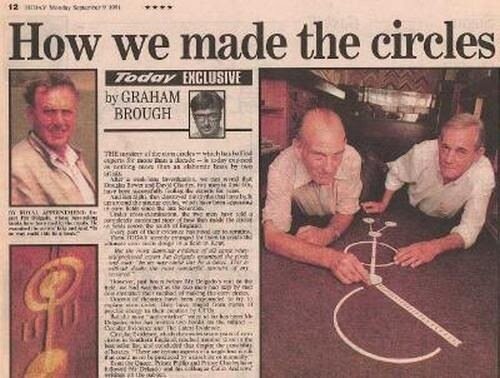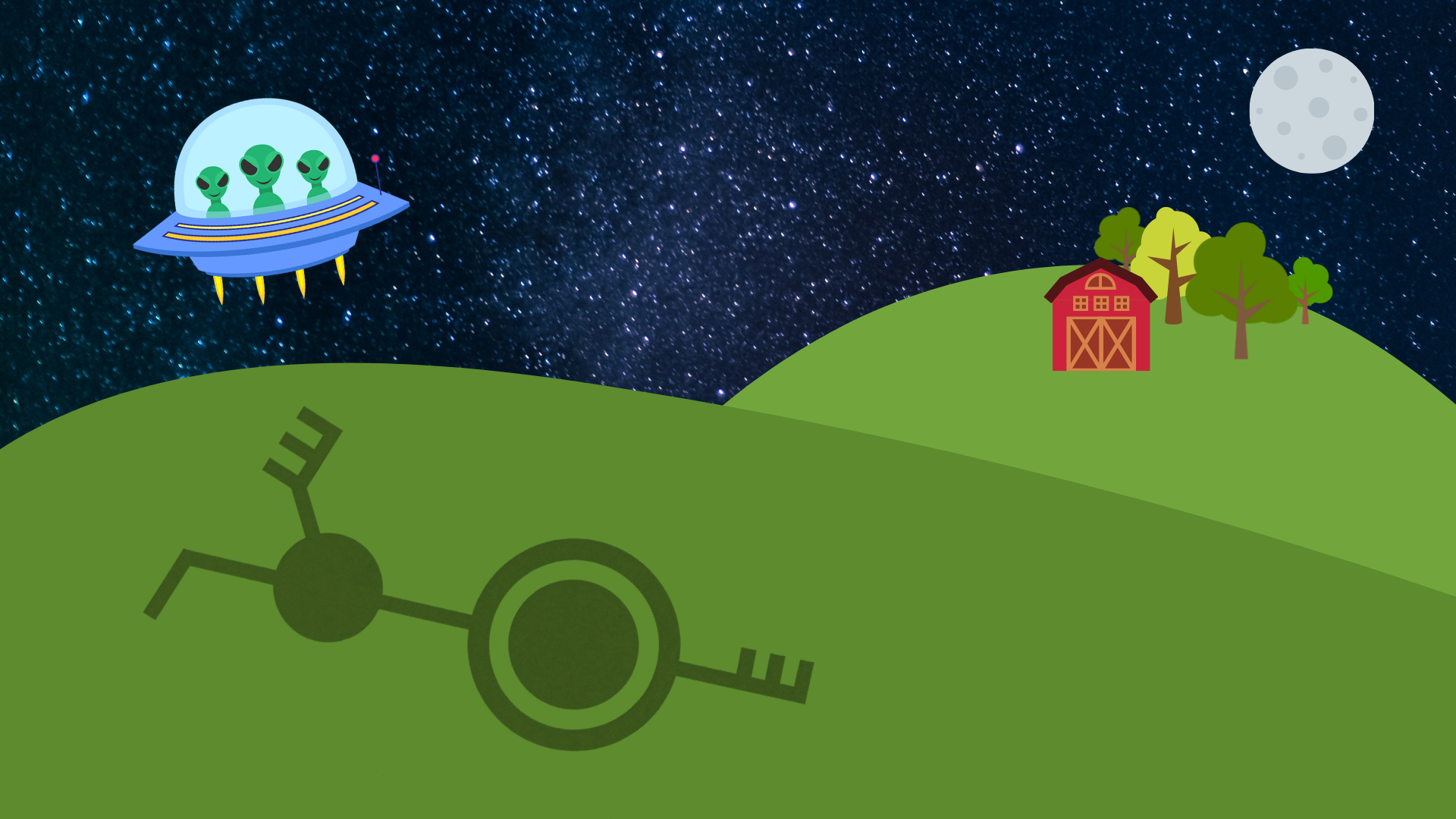Solving the Mystery of the Crop Circles
In the late 1970s, crop circles started to appear across the English countryside. At first most of them went unnoticed. But as they continued to proliferate, and grow increasingly more elaborate, the formations became a full-blown phenomenon. By 1990, hundreds of intricate patterns had been discovered in England’s crop fields.
People traveled from all over the world to see the formations. Some were simply interested in appreciating their beauty while others hoped to find out who (or what) had made them.
How the intricate patterns materialized almost magically overnight, with no witnesses and leaving no evidence, was surely a mystery. But to many, it was clear that the geometric designs were so perfect and complex that a superior intelligence had to be behind them. And that superior intelligence was, of course, aliens.
Alternative Explanations and Occam’s Razor
Humans are naturally curious. We want to understand the world around us and to know how or why something happened. We don’t like not knowing, and making sense of events gives us a sense of comfort and control over our lives.
And so we search for explanations. Our brains are pattern-seeking machines and we’re quick to find connections. We detect correlations and assume causation.
In general, we prefer simple explanations that fit with our existing beliefs. We don’t like complexity or uncertainty, so we quickly settle on unambiguous and uncomplicated narratives that are easy for us to understand. This is especially true if we can find someone or something to blame for perceived injustices.
Even more, once we land on a particular explanation, confirmation bias kicks in and we see evidence everywhere that proves we’re right. And the more confident we are that a belief is true the less likely we are to change our mind.
However, if the goal is to know the truth, the real explanation, jumping to a conclusion isn’t the best strategy. As critical thinkers deciding what to believe, it’s important to remember that we might be wrong and to consider alternative explanations.
As the name suggests, alternative explanations are other ways of explaining something. Scientists sometimes call them multiple working hypotheses and they are a powerful way to avoid being fooled or being wrong.

Start by brainstorming other ways to explain your observation. (The more the better!) This can be difficult if you already think you know the cause…so be skeptical and consider that you might be wrong. What else could be the cause? Could there be more than one cause? Or could it be a coincidence? Propose as many explanations as your creativity allows. However, explanations should always be falsifiable.
Then try to disprove each of the explanations by comprehensively and honestly evaluating the evidence. Remember, no one can deceive us like we can. We naturally favor explanations we want to be true, or that we already believe are true, but a true explanation will survive scrutiny.
Next, determine which of the remaining explanations is the most likely. One helpful tool is Occam’s razor, which states that the explanation that requires the fewest new assumptions has the highest probability of being the right one. Basically, determine the assumptions needed for each explanation to be correct and remember that extraordinary claims require extraordinary evidence.
Finally, accept the remaining explanation proportional to the evidence available. Keep in mind that 100% certainty is nearly impossible so make sure to adjust your confidence accordingly. Part of critical thinking is learning to be comfortable with ambiguity and uncertainty. Be open to changing your mind with new evidence and consider that you might never know for sure.
Mystery of the Crop Circles: Alternative Explanations and Occam’s Razor
The appearance of each new crop circle deepened the mystery. A slew of self-appointed “experts” had no shortage of speculations, ranging from mildly plausible to extraordinary to downright ludicrous, including:
- Ancient spirits angry about global warming
- Military activity, such as secret weapons testing
- Horny hedgehogs running in circles
- Human time-travelers sending messages from the future
- Spiraling winds
- Earth’s (undetectable) energy fields connecting ancient stone circles
- Aliens sending messages
- UFOs landing and taking off.
Despite the lack of consensus, one thing was clear to the crop circle experts, known as cereologists: they had to have been made by a superior intelligence. According to retired radar expert Pat Delgado, “No human being could have done this. These crops are laid down in these sensational patterns by an energy that remains unexplained and is of a high level of intelligence.”
Alternative explanations are a powerful tool. Used correctly, they can open our minds to other possibilities and help us discover the truth. Conversely, fixating on what we want to believe might keep us from discovering the truth.
Crop circles certainly have a magical appeal. It would be incredible if extraterrestrials were traveling across the vastness of space to leave humanity messages in bucolic fields. And it is plausible that life exists beyond planet Earth. However, claims require evidence. Without sufficient evidence…we simply don’t know.
“I think it would be inexcusably egocentric of us to suggest that we’re alone in the universe.”
Neil deGrasse Tyson
So it’s possible that aliens made the crop circles. But let’s also consider the possibility that they were made by humans and apply Occam’s razor.
The explanation that aliens made the crop circles requires several new (and gigantic) assumptions. For example, we don’t know for sure that there are aliens or that they have visited Earth. These are extraordinary claims for which we do not have extraordinary evidence.
However, the explanation that humans made the crop circles doesn’t require any new assumptions. We know humans are capable of flattening crops into geometric shapes.
Therefore, the explanation that is the most likely is that humans made the crop circles. It’s important to note that we didn’t disprove the alien explanation….it’s just much less likely. So we can tentatively accept the human explanation until new evidence suggests we change our minds. It’s possible that we may never know for sure, but as critical thinkers we are comfortable with uncertainty.
Solving the Mystery
In 1991, Doug Bower and Dave Chorley fessed up… proving they were the pranksters by making a crop circle in front of a crowd and on camera.
Apparently the joke had started in 1976. The two friends were watercolor artists who hung out at the pub on the weekends. One night over a pint Bower told Chorley about the “saucer nests” that were sometimes found in fields when he lived in Australia. They decided to have a “bit of a laugh” and create one of their own.
Using an iron bar from his shop that he used to prop the door open, they headed to a nearby field, pressed the wheat down into a large circle and went home.
They kept doing it nearly every weekend. They were artists after all and a field is a giant canvas. But after a couple of years and no interest from the public they decided something needed to change. They found a field near a tourist spot and created a crop circle 80-feet wide…and the next day it was on the national news.
They eventually upgraded their equipment to 5-foot boards threaded by rope and a baseball cap with a loop of wire to ensure straight lines. Yet even with their simple tools their designs grew more and more elaborate. Sometimes they traveled over 200 miles a night to make designs in fields under the light of the moon.
In 1985, Bower’s wife became suspicious when she noticed how many miles were on their car’s odometer. After all, he was supposed to be at the local pub with his mate. So, he told her their secret…and she didn’t believe him. He asked her to draw a design so he could prove it to her. After her design was featured on the news she gave her blessing for him to continue.


Source: The Delightful Con Behind the Crop Circle Phenomenon
By the time the pair came clean in 1991 they had created over 200 crop formations. And despite having designs of every circle they’d made, and making one on camera, some didn’t believe them, coming up with elaborate justifications for how they knew the other circles weren’t hoaxes. It’s true that during this time crop circles were appearing in parts of the world that Bower and Chorley couldn’t drive to in an evening. But no one likes to admit that they had been conned. And instead of entertaining the possibility that copycats were a plausible alternative explanation they clung to their belief in a superior intelligence.
And for a pair of friends that were out for a laugh, being called a “superior intelligence….was the biggest laugh of all.”
The Take-Home Message
Humans are naturally curious. We want to know and to understand. Unfortunately, we can get in our own way and fool ourselves by jumping to conclusions and finding evidence for what we want to be true.
We’re more likely to get closer to the truth if we consider alternative explanations. This isn’t just the case for supernatural or paranormal beliefs. Consider how many times a day you wonder why or how something happened. These are all opportunities to practice finding alternative explanations and using Occam’s razor to determine which is the most likely. And as always, be skeptical and demand evidence proportional to the claim.
Some may say critical thinking takes the fun out of things. But I don’t think Bower and Chorley would agree. Sadly, Chorley passed away from cancer in 1997. When asked later why the pair would spend so much of their lives making crop circles, Bower replied, “It was just pure enjoyment, on those beautiful summer nights for two artistic people under the stars amid all those cornfields… It’s been a wonderful experience and I wouldn’t have missed it for the world.”
To Learn More
Today I Found Out: The Story Behind the Crop Circle Phenomenon
Hunt a Killer: The Delightful Con Behind the Crop Circle Phenomenon
South Today (1991): Bower and Chorley

Pingback: Le pouvoir des explications alternatives - CITIZEN4SCIENCE
in 1955 in levorno italy and in 1958 in powell wyoming I watched crop circles being made by a lite breeze
How old are you know?
Sorry, I don’t understand the question.
Melanie